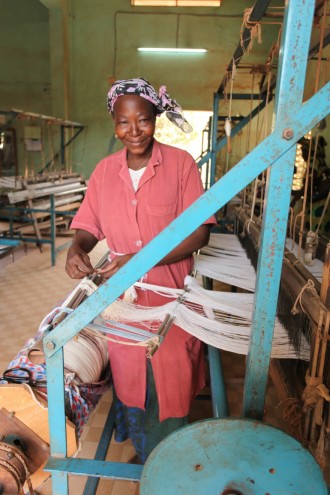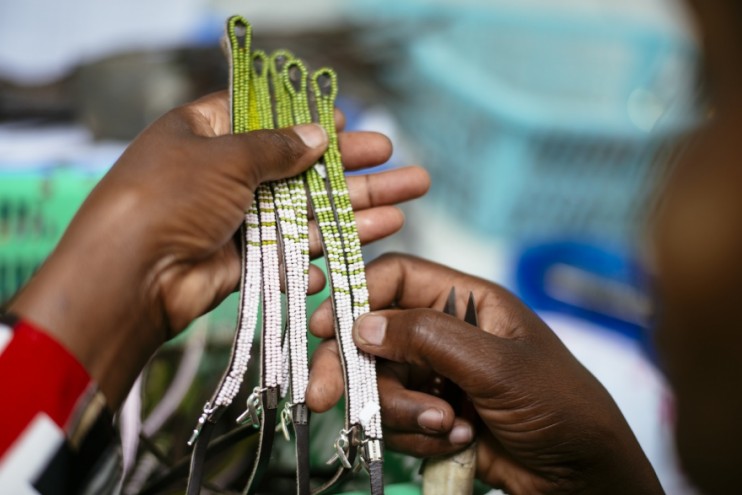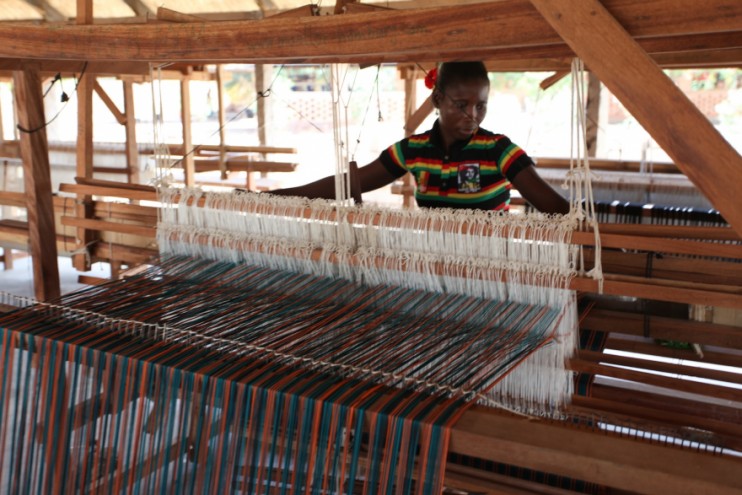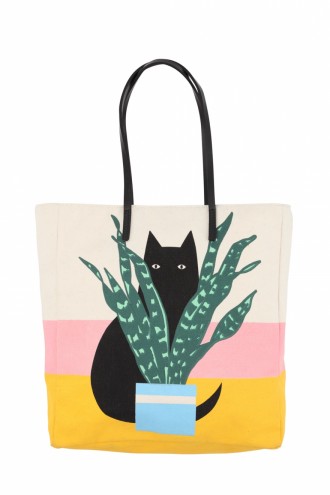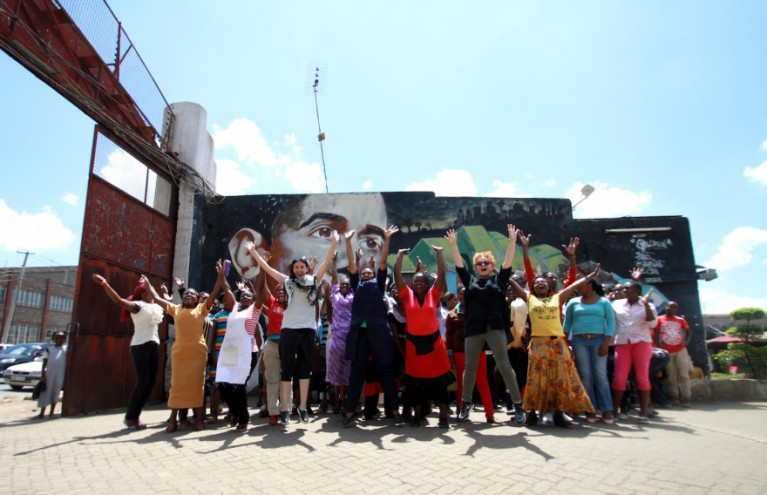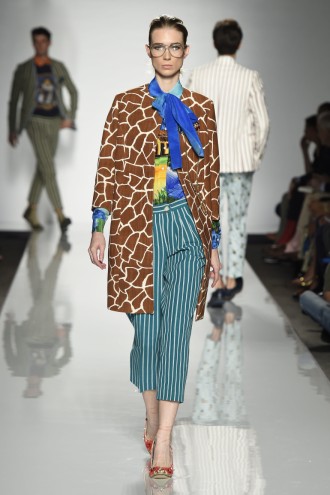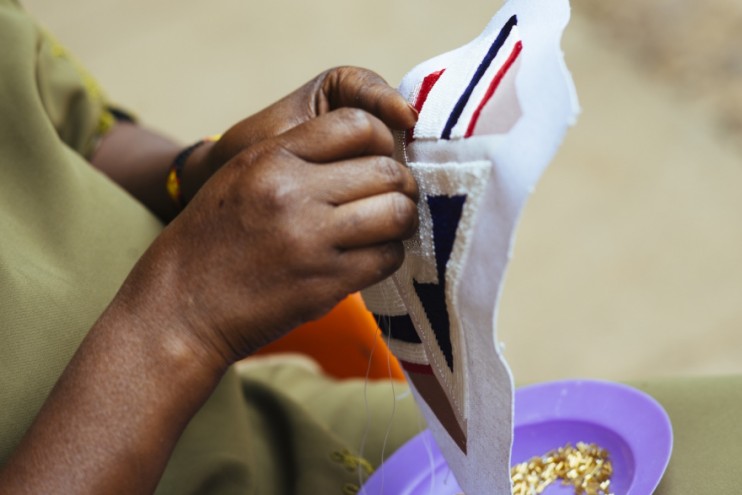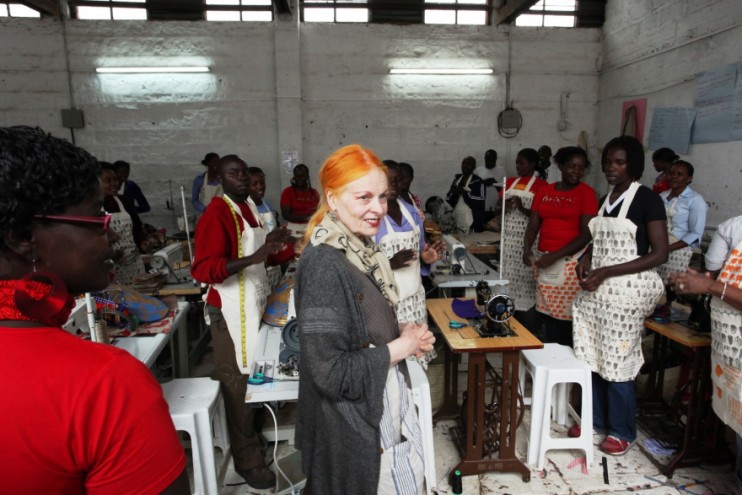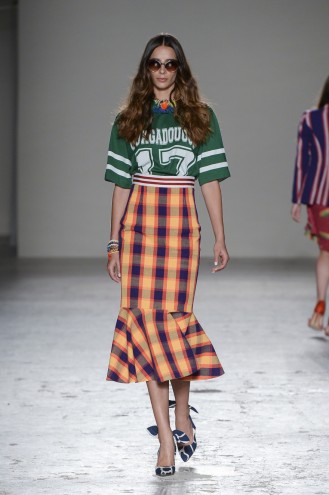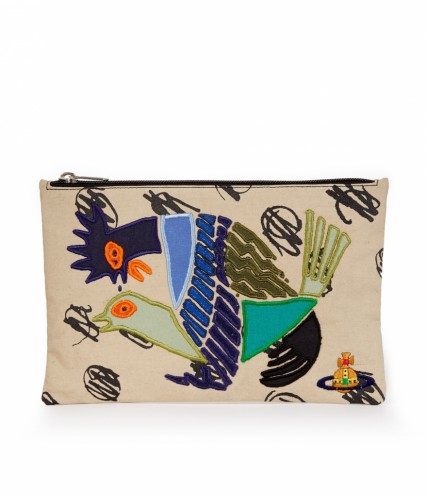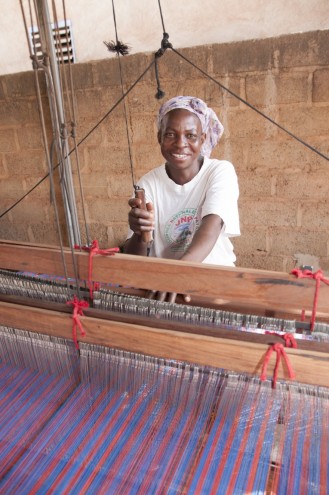While Simone Cipriani was travelling back and forth between Ethiopia – where he worked – and Kenya, he befriended an unlikely character: Gino Filippini, a lay missionary whose mission was to create trade and work for micro-producers in Nairobi’s Korogocho slum.
Inspired, Cipriana left his job in Ethiopia and poached the United Nations and the International Trade Centre to help him found the Ethical Fashion Initiative (EFI). “I sensed a true potential in this new segment of the market: working with micro-producers in this way could impact their lives positively,” says Cipriani.
The Ethical Fashion Initiative connects marginalised artisans – the majority of them women from African communities – to the international high-fashion industry. The initiative introduces fashion designers such as Dame Vivienne Westwood and Stella McCartney to women across Africa who possess unique artisanal skills such African weaving; embroidery, dying and printing that are not commonly found in the western market and can’t be easily replicated by mass-producers.
Together they create bespoke products such as bags and textiles, which walk the runways of New York and Milan. But the end product of the initiative isn’t just beautiful knick-knacks and dazzling runway shows. The heart of the initiative is to foster local creativity, employ women and reduce poverty in rural African communities.
This job brings more than money for my needs. This job gives me confidence. I have learned new skills and I keep learning more," - Winfred Wangari, the supervisor for Ethical Fashion, Nairobi.
The initiative is a much-needed alternative to the fast, fly-by-night fashion of our contemporary time – it’s a process that is good for the environment and people. So far, the initiative has reached 7 000 women. True sustainability, not just as a “buzzword,” Cipriani says, is also at the core of the Initiative.
Cipriani spends most of his time with his sleeves rolled up working in the slums of Nairobi and other communities around Africa with women like Winifred Wangari. He lays the pipework, which allows African women artisans and high-fashion designers to collaborate in making garments that tell the beautiful story of social responsibility.
As this interview shows, Capriani’s vision into ethics and fashion is uncommon:
Which regions in Africa are you currently working and what artisanal products are these people producing?
At the moment, we work in Kenya, Mali, Burkina Faso and Ethiopia. The project started in Kenya where artisans produce bags for fashion brands. We are very proud that just this year a group of Kenyan investors took over the main hub and facility we set up there. In Burkina Faso we work with artisans that have a strong textile heritage, hand weaving a beautiful cotton fabric known as Danfani while and in Mali we work with artisans who produce Bogolan, Basilan and Indigo fabric.
Our new project is in Ethiopia, where we are working with the leather factory and tannery on a bag and shoe production – we are very excited about this new development.
You stress that the Ethical Fashion Initiative is not a charity, so what are some of the results for the women working in the initiative?
Indeed. Our main focus is to create jobs and trade by connecting artisans to the fashion market. Having dignified work is really the key to reducing poverty and receiving a fair salary means people are able to access education, medical services and improve their homes.
There is also a positive psychological effect of having work, which is that people feel empowered and their confidence grows. Working with a majority of women, we also clearly see a positive change in the respect communities show towards them.
Who are some of the designers that the Initiative currently works with?
We have on-going relationships with many of the fashion houses such a Karen Walker, Stella McCartney, Stella Jean, Vivienne Westwood, United Arrows, Chan Luu and many more.
As part of our African designers programme, we are promoting some of the most innovative contemporary fashion designers from the continent. For example, last June we took four fantastic designers to showcase their work during Pitti l’Uomo: MaXhosa by Laduma, Dent de Man, Projecto Mental and Orange Culture. Pitti is very enthusiastic about promoting Africa as a new horizon for fashion and we decided to partner and repeat this initiative every year.
Are there plans to collaborate with any new designers in the next year?
We have just started working with Aurora James who is behind the shoe wear brand, BrotherVellies. We are helping her with her Made in Africa shoe production, specifically in Ethiopia. Our partnership with the Australian brand MIMCO is also expanding and we are currently producing their second collection.
Please share something personal about EFI? Something we can’t get by searching the Initiative online?
Working with big institutions means that I face barriers with bureaucracy.
It’s rare to find people and colleagues with a private sector and trade background who don't understand what we do. Also, what often matters in this world is some buzzword to be constantly repeated; the latest one is sustainability. Sustainability is the challenge of today, and it has to be put into practice in the real world.
Please tell us about the involvement of some of the larger names such as Dame Vivienne Westwood and Stella McCartney?
We chose to work with designers like Vivienne Westwood and Stella McCartney as being responsible, ethical and environmentally friendly is core to their brands. They supported our mission to pay people a living wage and were also flexible and supportive in designing collections that were adapted to artisanal production. For us, it has been a great success that these designers have partnered with us long-term. We have just celebrated our 11th season anniversary with Vivienne Westwood.
Do you have any anecdotes about your experiences working with them?
Vivienne came to Kenya in 2012 to meet the artisans working for her Made in Kenya collection and to develop a new collection. It was her first time there yet she very instinctively integrated into the environment, feeling at ease in the workshops and even when we took her to visit community groups of micro-producers in Kibera or Korogocho slums.
We also took her to Laikipia to meet the group of Turkana women who did beadwork on some of her clutch bags at the time. This is a place several hours from Nairobi, in the middle of the savannah with elephants, giraffes and other wild animals. The village was honoured we were coming to see them (perhaps without knowing what kind of a celebrity Vivienne was) and organised a big welcome ceremony on the grounds of the local school, together with all the school children still in their uniforms. There, in the middle of a well-rehearsed presentation and speeches by the local community leaders, Vivienne walked up to the middle of the playground and started giving a class to the children (she used to be a teacher before becoming a designer).


